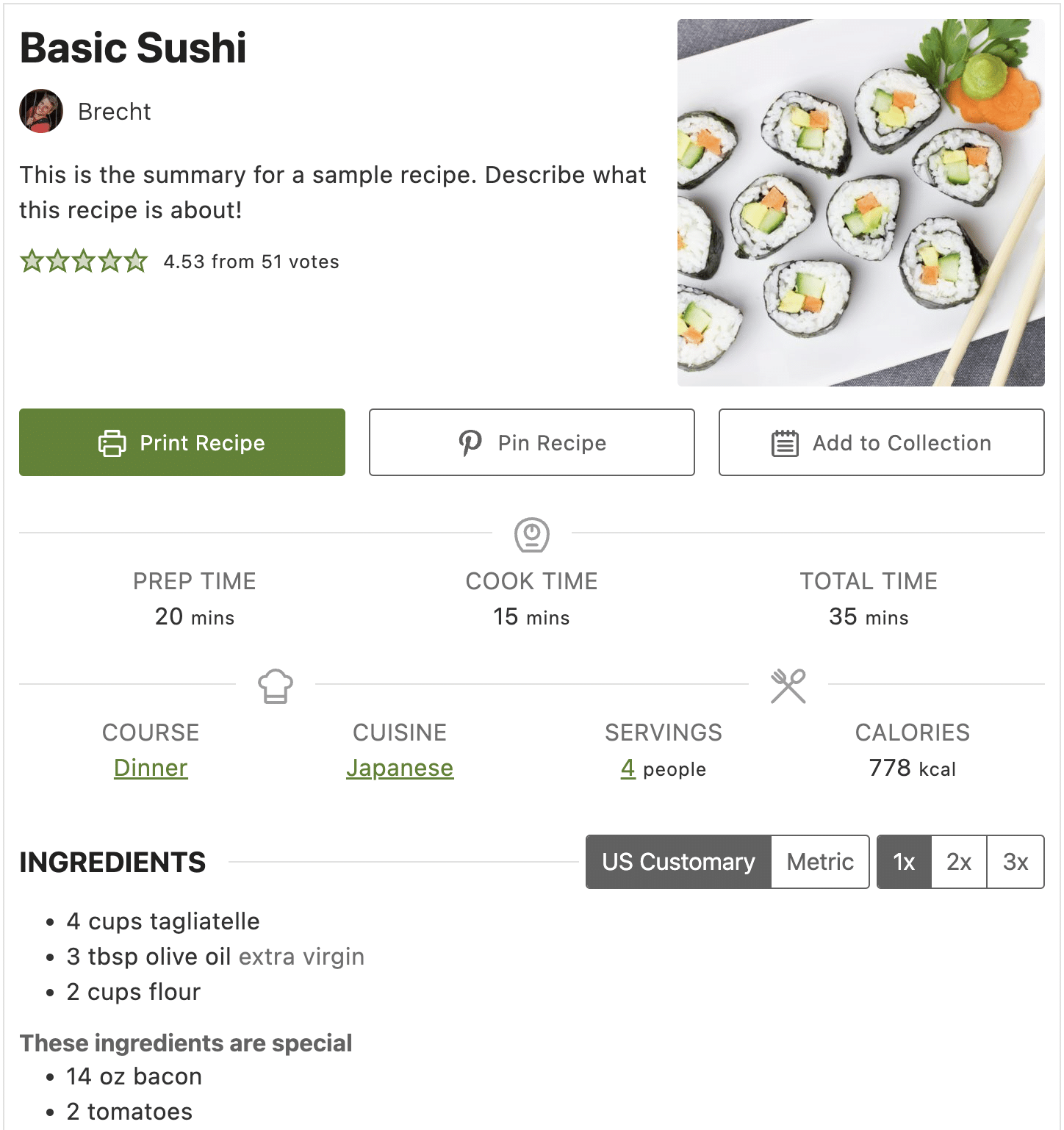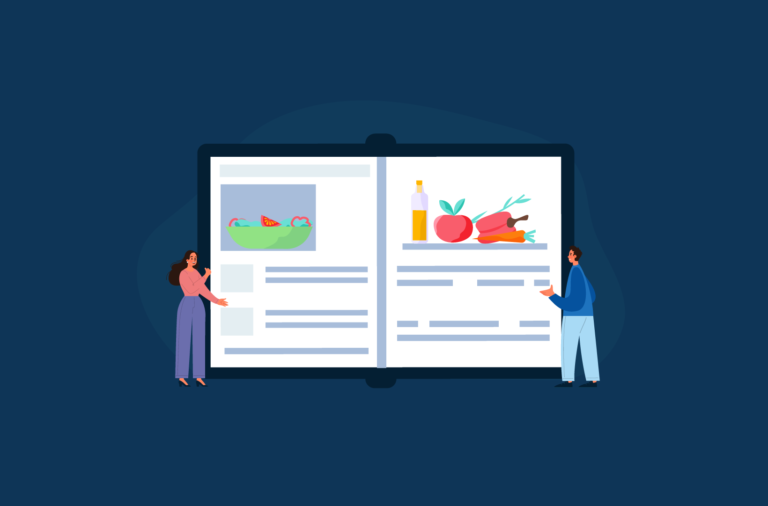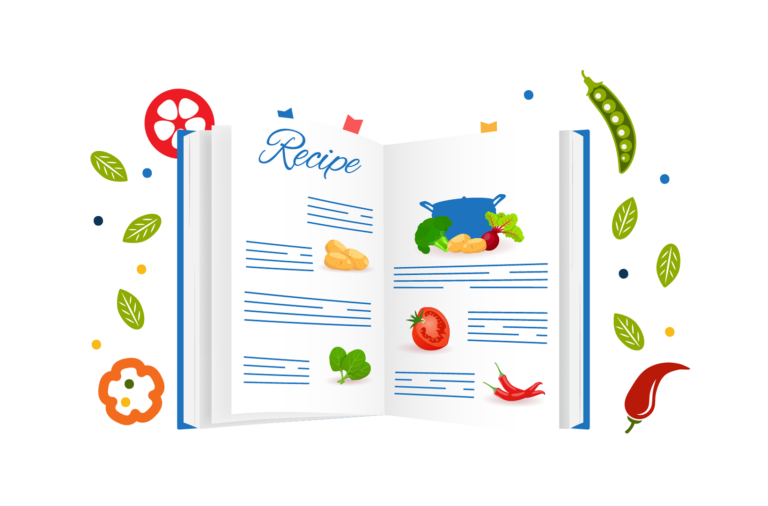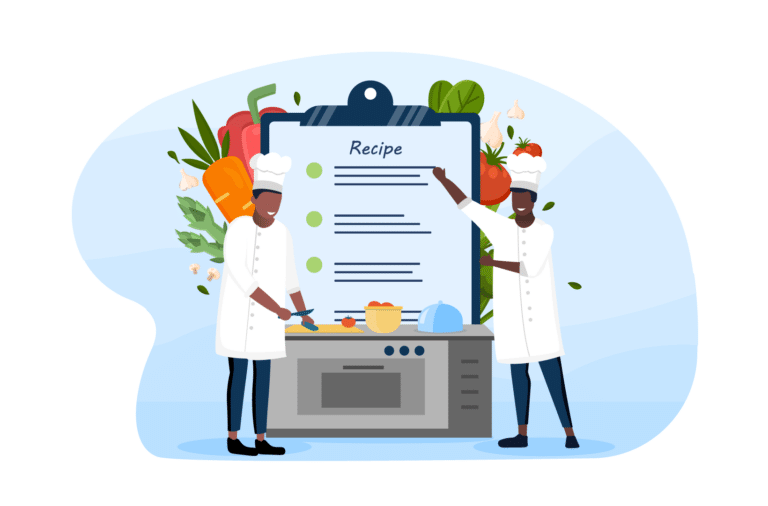Thinking about starting your own WordPress recipe website? If so, you’re not the only one. Running a WordPress recipe blog is a popular option for food lovers who are able to share their love for cooking with a large community of passionate foodies. And starting a food blog offers more than a chance to share your favorite new recipes: if done correctly, then it could even provide an additional income stream.
Of course, everyone loves the idea of having extra money flow into their bank accounts, and even more so if it’s by doing something that they inherently enjoy doing. So the question is: is it difficult to create your own recipe-focused WordPress website, one that will earn you a side income?
While it’s not easy, it’s certainly not difficult. And if you don’t believe us, then read on, where we’ll outline everything you need to know to create, customize, and monetize a recipe website.
How to build a recipe website using WordPress

Running a profitable recipe website is not easy. It takes time, patience, and work. But don’t worry: even beginners can be successful. Below, we’ll run through a step-by-step guide that’ll have you on the path toward success.
1. Domain and hosting selection
Domain name
Your domain name can make or break your website’s success. To be successful, it must be both easy to remember and relevant to the type of content that you post.
For example, if you’re posting vegan or vegetarian recipes, then the domain name should allude to this theme. If you’re having trouble selecting a name that gets the message across and that visitors will remember, then let AI give you inspiration — there are tools that’ll brainstorm domain name ideas for you in a matter of seconds.
Web hosting
Equally as important as a good domain name is choosing the right web hosting. Inadequate hosting can negatively affect your website’s performance and uptime, which impacts the user’s experience and makes them less likely to return in the future.
You’ll have a variety of hosting options at your disposal, including shared hosting, managed WordPress hosting, and VPS hosting, so take a look at which each provides and choose the one that’s right for your needs. Some reputable and reliable hosting providers include SiteGround, WP Engine, and Bluehost — you can’t go wrong if you select one of them.
Domain and hosting packages
It nearly always makes the most sense to purchase your domain name and hosting services together as a package rather than individually. It’s just more convenient and usually cheaper. When looking at packages, pay particular attention to the amount of storage space and bandwidth they offer, as well as the quality of their customer support.
2. Installing WordPress and selecting a food theme
WordPress is your best bet for any website, including when you build a recipe website. Easy to use and with strong SEO credentials, it’s no surprise that more than 30% of all websites use WordPress as their website creation platform. To get the most from your WordPress website, follow the following tips:
Installing WordPress
If you’re looking to make things as straightforward as possible, select a hosting provider that offers a one-click WordPress installation option. Alternatively, you can manually install WordPress with the following steps:
- Download WordPress
- Upload WordPress to your hosting account
- Create MySQL database and user
- Configure wp-config.php
- Run the installation
Choosing the right theme
Your WordPress theme will essentially be responsible for the quality of your web design, which plays a key role in the overall user experience.
It should be both visually appealing and functional (as in, easy to navigate), as well as thematically appropriate. By that, we mean that it should make sense for a recipe website. The right recipe theme will be one that makes your site easy to manage and which looks good (and “like a recipe website”) from the visitor’s perspective.
Two great food-focused themes include:
- Foodie Pro: This is a great option if you’re looking for a sleek, minimalist theme that provides an attractive range of colors and typography to help style your recipe site.
- Cookely: This is a good option if you’re on the looks out for a recipe theme with lots of functionality and features to help organize your many recipes in an attractive and intuitive way.


A good theme template will be ready to go out of the box, but you’ll want to take some time to customize the look and feel of the design. This can involve changing colors, fonts, and layouts so that they match your brand and overall preferences.
It’s also recommended to use WP Recipe Maker, a recipe plugin that’ll help to enhance the display and organization of the recipes you post. And don’t forget about Elementor, a useful and easy-to-use tool that provides attractive templates with which you can design your home page, headers, and other key website elements.
3. Selecting recipe site friendly plugins
If you’re building a recipe website on WordPress, your choice of plugins can make or break the success of your site. Recipe plugins are designed to enhance the functionality of a website by adding features specifically tailored for managing and displaying recipes.
We recommend using WP Recipe Maker, which comes with the following features:
- The ability to add aesthetically pleasing, customizable recipes to your site
- SEO-optimisation by automatically applying schema markup to recipes
- Social sharing buttons
- Monetization options, including affiliate links
- Seamless integration with most WordPress themes, editors, and page builders
Here’s an example of how you can showcase recipes on your website with the help of WP Recipe Maker:
4. Creating recipe content
As we mentioned earlier, you can’t just post any old recipe on your site and expect it to be a hit. In order to be successful, you have to offer quality recipes that people will be excited to read and make. Indeed, in many ways, this is the most difficult part — the website creation process is relatively straightforward; attracting an audience and building a community of passionate food lovers takes expert work. It’s at this point that your food credentials will really take center stage.
Recipe creation
If you’re going to build a recipe website, then it’s essential that you post original, well-researched, and visually appealing recipe content. Anything else will just add to the mass of unengaging content that you can find all over the web!
So what do you need for your recipes to be successful? First of all, the final result must be delicious — your audience should have the desire to make the dish themselves. From there, you’ll need to provide a clear ingredients list, as well as step-by-step instructions for how to make the dish from start to finish.
The WP Recipe Maker plugin can be invaluable in this regard. It offers a step-by-step data input process that allows you to input all the key data related to your recipe, including the number of servings, cook time, ingredients, and prep time.
The plugin is intuitive to use and will guide you through the process from beginning to end, and once you’ve finished, you’ll have a visually appealing recipe box that you can insert straight into your website.
Photography and visuals
High-quality images and visuals will be key to attracting and retaining your audience. Without them, you’ll just have a wall of text, and that can test the patience of even the most committed food-lover.
So you’ll need to take great photos of the dishes you post on your site. For this, it’s best to use a high-quality, professional camera if you have access to one. This process is a bit longer than simply snapping a photo with your smartphone, but it’s worth it. You don’t need to have expert photos, but they have to be visually appealing — if required, you can also have a photo editor touch up your photos for a small fee.
The other key visual to add is your digital information, including information about you and links to your social media channels. You can do this by adding a sidebar on the right-hand page of your website’s pages.
SEO best practices
Your recipe content needs to rank highly on search engines (specifically, Google) if you’re going to build a recipe website that finds success. There are many ways to do this, including:
- Conducting keyword research to find the best keywords to target
- Ensuring your recipes match the search intent for your chosen keywords
- Adding schema markup, a type of HTML code that gives more information to search engines about your website.
- Building high-quality backlinks to your recipes
- Meta descriptions optimized for the keyword and search intent
- Adding suitable alt text to images
Top tip: If you use WP Recipe Maker, then the plugin takes care of automatically adding structured data to your recipes that help to boost SEO.
5. Launching the website
Once you’ve got the basics of your website, it’ll be ready to launch. Before doing so, make sure that you do the following:
- Proofread all your content: People expect flawless grammar and spelling.
- Test functionality: Your site can only be successful if it works well.
- Set up Google Analytics: This will provide valuable data insights that’ll tell you how many visitors you receive, the pages they like, and so on.
Tips on growing your recipe website
Once your recipe website is set up, growing it is the next exciting yet challenging task. Here are some tips to help you expand your audience and increase engagement:
- High-quality content: Ensure that your recipes are well-written, easy to follow, and accompanied by appealing images.
- Mobile-friendly design: It’s essential to have a responsive website design that provides a seamless experience across different screen sizes.
- Social media presence: Share your recipes, engage with your audience, and use visually appealing content to attract followers on social media platforms like Facebook, Instagram, Pinterest, and Twitter.
- Video content: Incorporate video content into your website, such as cooking tutorials, recipe demonstrations, or behind-the-scenes footage.
- Email marketing: Build an email list of subscribers who are interested in receiving updates, newsletters, and exclusive recipes from your website. Use email marketing to stay in touch with your audience and drive traffic back to your site.
- Collaborations and partnerships: Collaborate with other food bloggers, chefs, influencers, or brands in your niche to reach a broader audience. Partnerships can include guest blogging, recipe swaps, or joint promotions.
- Community engagement: Create a sense of community on your website by allowing users to leave comments, share their own recipe variations, or participate in forums or discussion boards related to cooking and food.
- Regular updates: Keep your website fresh and relevant by regularly adding new recipes, blog posts, or articles.
- Analytics and feedback: Use website analytics tools to track visitor behavior, demographics, and engagement metrics to make informed decisions to optimize your recipe website.
Tips on monetizing your recipe website
OK, so now we’ve got a vague sense of how to create a successful food recipe website, let’s think about the specific ways that you can make money with your recipe blog. Below, we’ll outline the four primary ways that recipe websites build revenue.
Ad revenue
Displaying advertisements on your website is a surefire way to generate income. Using Google AdSense (and others), you can build revenue if you have enough traffic, choose the right ads, and display the ads in the right location. Spice Up The Curry, a WP Recipe Maker user, is a good example of how to use advertisements within your content to monetize your site.
Affiliate marketing
If your website is successful, then you’ll have a large audience of passionate food lovers. And that audience could well be interested in kitchen appliances, cookware, and ingredients.
By incorporating an affiliate program such as Amazon Associates into your website, you can promote these food-related products (or, in some cases, services) via your blogs and earn a commission on all products sold. A good example of this is Contemplating Sweets, a WP Recipe Maker food blogger that frequently adds Amazon Affiliate links for products such as sesame seeds and cornstarch, earning a percentage of every sale along the way.
Sponsored content
Your food-loving audience may be of interest to food brands, who will happily pay you to post content sponsoring their products and services. Justine Snacks, who runs a popular food blog, typically has ingredient sponsorships with major brands. Just be sure to disclose that the content has been sponsored in order to retain trust with your website visitors. 
Selling products or services
Not that you necessarily need to sell another company’s products on your website. You can also monetize your site by selling your own products or services! Examples include selling merchandise, meal plans, recipe e-books, and online cooking classes.
Build your recipe website using WP Recipe Maker
As we’ve seen, building a recipe website is more straightforward than many people believe. It takes time to build an audience, sure, but once you have the basics in order, you’ll be on the right path.
You can make the process of getting your recipe website underway more straightforward by utilizing WP Recipe Maker, which will give your website easy-to-follow, visually appealing recipes. In addition, remember to:
- Choose an easy-to-remember domain name.
- Install WordPress and choose a food-appropriate theme.
- Add WP Recipe Maker to your blog.
- Create high-quality recipes.
- Ensure your website is visually appealing and engaging.
Once you’re up and running, enhance your website using WP Recipe Maker, which will allow you to produce organized, visually-appealing recipe displays, add ingredient lists and thorough instructions, and much more. Choose your WP Recipe Maker bundle, and you’ll be on your way to success.










Very comprehensive and thorough article. Thank you for sharing! #lovewprm